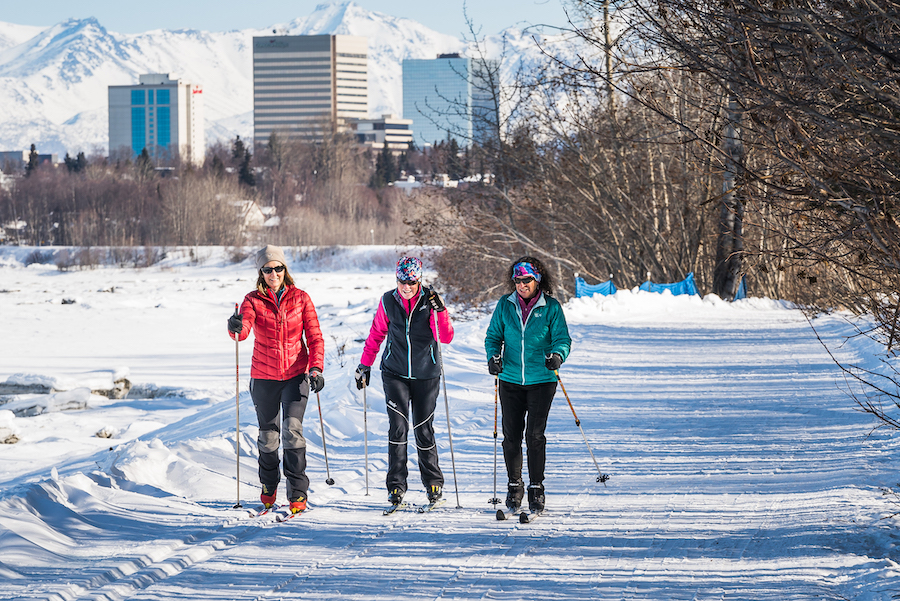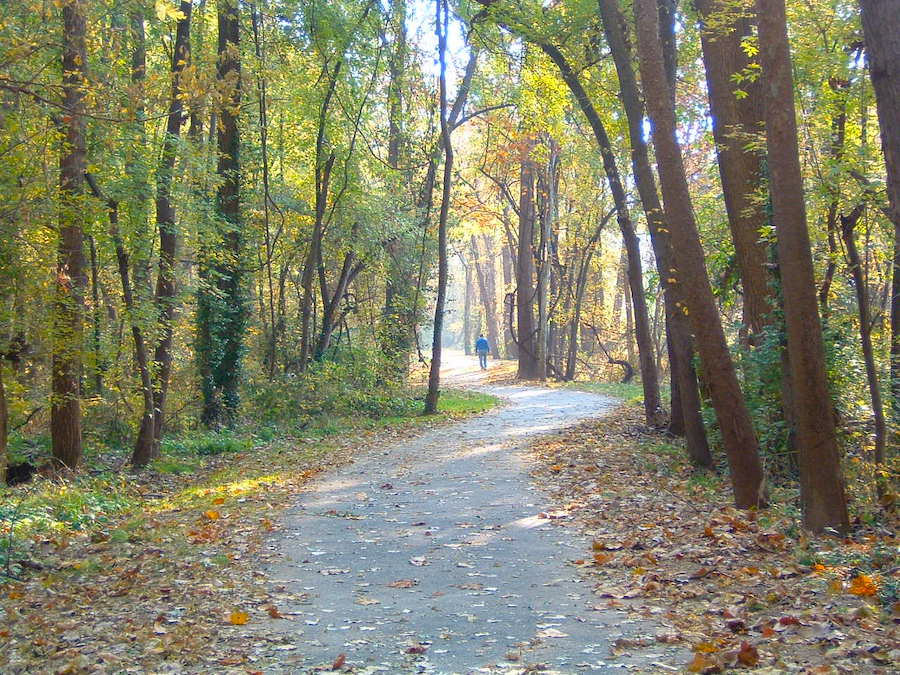Meet the 2022 Rail-Trail Hall of Fame Nominees

08/11/22 Update: Rails-to-Trails Conservancy (RTC), the nation’s largest trails organization, announced that Maine’s Eastern Trail would join its Rail-Trail Hall of Fame—an exemplary group of rail-trails nationwide celebrated for the social, economic and quality-of-life value they bring to the communities they serve.
I’m not gonna lie: Picking a winner for the 2022 Rail-Trail Hall of Fame is going to be tough. But we hope you will enjoy the challenge! Since 2007, Rails-to-Trails Conservancy has bestowed this honor on rail-trails from across the country based on merits such as scenic value, high use, trail and trailside amenities, historical significance, excellence in management and maintenance of facility, community connections and geographic distribution.
Each of our candidates this year checks off all those boxes and brings unique characteristics that make them a total shoo-in for the Hall of Fame, so we’re relieved the choice is in your hands when public voting kicks off on Friday, July 22. Without further ado, please allow us to introduce our three outstanding rail-trail nominees.
Tony Knowles Coastal Trail (Alaska)
With views of the Chugach Mountains and tidal inlets, Anchorage’s Tony Knowles Coastal Trail offers breathtaking beauty coupled with a good chance of seeing moose, black bears, bald eagles or other wildlife within the wooded fringes of Alaska’s largest city. Hugging the coastline, the 11-mile paved pathway connects a handful of popular parks, including Earthquake Park, which shares the story of the 1964 natural disaster that was the second-largest earthquake ever recorded worldwide. Come winter, you’ll see cross-country skiers, snowshoers and fat-tire bikers using the trail as it provides a year-round recreational and transportation amenity for the city, home to about 40% of the state’s population.
At Westchester Lagoon, the Coastal Trail meets up with the Lanie Fleischer Chester Creek Trail, which heads east across town, and on the Coastal Trail’s northern end, the rail-trail is mere blocks away from Ship Creek Trail and the Alaska Railroad Depot. Passengers can hop on a train to ride north to famed Denali National Park and onward to Fairbanks or head south to Seward, a port for cruise ships. The Coastal Trail parallels the historic railroad—originally established in the early 20th century—for about 2 miles in a rail-with-trail configuration.

Key connections: The Coastal Trail plays a leading role in the Moose Loop, an initiative that highlights connectivity between 32 miles of paved, multiuse trails throughout Anchorage. When viewed on a map, the trails connect in the shape of one of Alaska’s most famed mammals—from its ears and dewlap to its humped back. This network of trails provides opportunities for safe, convenient and accessible travel around the city without a car.
Related: Trail of the Month: Alaska’s Tony Knowles Coastal Trail
Eastern Trail (Maine)
Routes through New England don’t come much prettier than the Eastern Trail, which traverses Maine’s spectacular southern coastline and dense forests. Heading southward on the rail-trail from South Portland’s historical lighthouse (dubbed “Bug Light” for its diminutive size), you’ll pass through the 3,200-acre birding heaven of Scarborough Marsh as well as a rocky ravine near Arundel where a railroad route was once blasted through more than a century ago. From start to finish, the trail is chock-full of postcard-perfect backdrops.
While the 24-mile pathway ends at Kennebunk and is the most-used portion of the Eastern Trail—attracting nearly 250,000 bike and pedestrian users in 2021—a signed bike route continues south to Kittery, near the New Hampshire border. Combined, the off- and on-road portions of the corridor span 65 miles.
In addition to connecting Maine’s coastal communities and providing access to the region’s natural assets, a recent economic impact study of the trail showed $44 million in annual economic benefits to southern Maine. The Eastern Trail is also an example of a successful public-private partnership, as a utility company shares the corridor for a natural gas line.

Key connections: The Eastern Trail is part of two expansive multistate trail systems: the developing 3,000-mile East Coast Greenway that will connect trails from Maine to Florida, and the New England Rail-Trail Network, which aims to unite the region’s six states—Maine, Vermont, New Hampshire, Massachusetts, Rhode Island and Connecticut—by multipurpose trail.
Related: Trail of the Month: Maine’s Eastern Trail
Grant’s Trail (Missouri)
Not far from St. Louis’ Gateway Arch, the 12-mile Grant’s Trail winds through seven municipalities and has a lengthy list of unique sights, including Grant’s Farm, named for the 18th president and Civil War general Ulysses S. Grant, who farmed in the area in the 1850s. Today, Grant’s Farm—the former estate of the Busch family of Anheuser-Busch brewing company fame—is an animal park featuring bison, camels and more than 100 other species, including its most iconic residents, the Budweiser Clydesdales.
White Haven, another home owned by Grant, also lies along the trail and is operated by the National Park Service as a historic site. While at White Haven, Grant approved construction of the Pacific Railroad (later known as the Missouri Pacific Railroad) through his property. Ground was broken for the railway in 1851, and it was billed at the time as “The first railroad west of the Mississippi.” Grant’s Trail was built on a spur of the rail line and Kirkwood, where the trail ends, was established when the railroad tracks reached it in 1853. The town’s refurbished 19th-century depot is still in use today by Amtrak.
More than half a million visitors a year enjoy the trail’s tangible connection to history as well as the paved pathway’s wooded sections, its stunning boardwalk over wetlands and views of ponds and the paralleling Gravois Creek.

Key connections: On its eastern end, Grant’s Trail, also known as the Gravois Greenway, connects to the River Des Peres Greenway Trail. Both are part of the Great Rivers Greenway’s efforts to develop a 600-mile network of interconnected trails and on-street bicycle routes throughout the St. Louis region. And, while not directly connected, Grant’s Trail is also only about 15 miles from Missouri’s most famed rail-trail, Katy Trail State Park, a Hall of Famer spanning a whopping 240 miles across the state.

Donate
Everyone deserves access to safe ways to walk, bike, and be active outdoors.